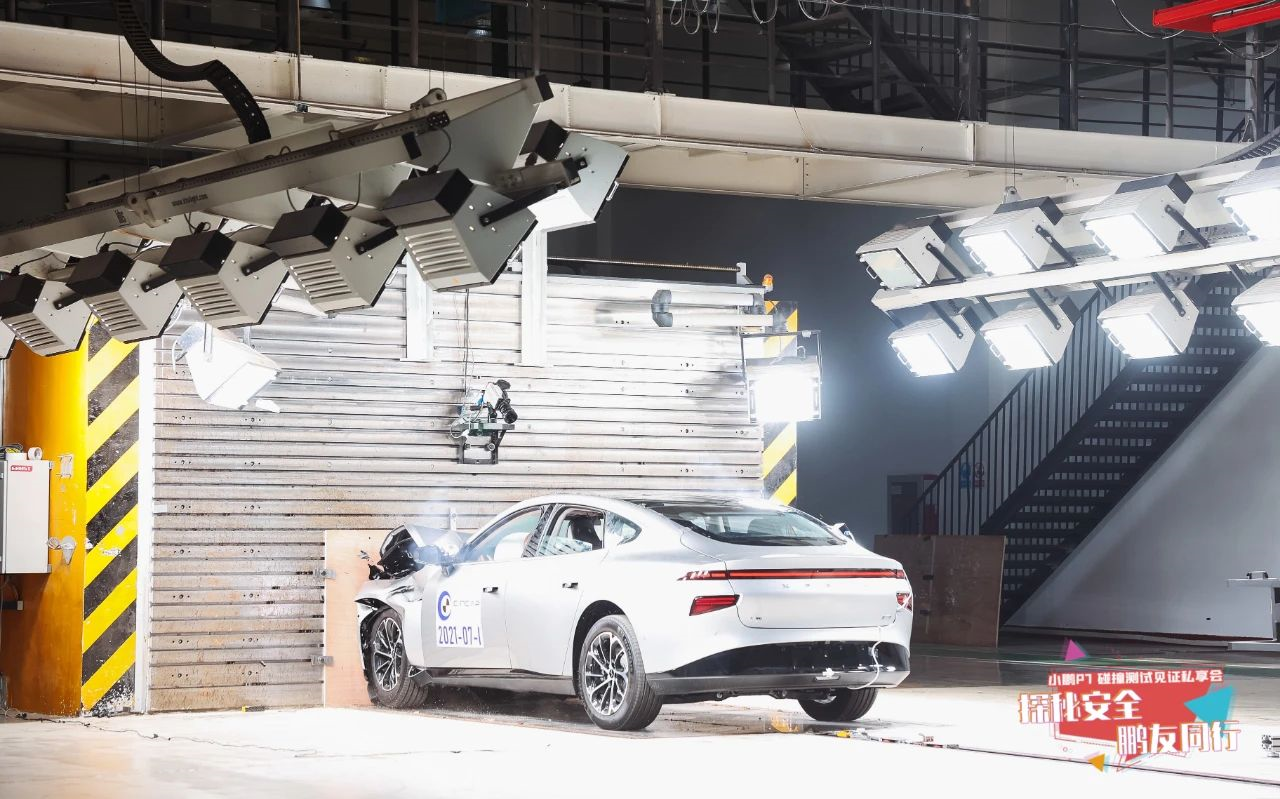Author: Wang Bo
This is my first time witnessing an electric vehicle collision test on-site, especially such an exciting head-on 100% collision test.
To be honest, I was quite nervous, especially when I found myself unable to take my eyes off the fire truck on the side of the field. This feeling became stronger and stronger.
However, when a silver-gray Xpeng P7 suddenly came from afar and hit the “wall” heavily, all my doubts disappeared.
The A-pillar did not deform, all airbags deployed, the battery did not catch fire, and the dummy was also undamaged. Hmm…it’s stable.
In the end, the test results of C-NCAP were better than I could imagine.
Xpeng P7 scored 89.4% in the C-NCAP five-star rating, and in terms of active safety, Xpeng P7 had a score rate of 98.51%, which is the highest score for pure electric vehicles so far.
-
The occupant protection rating score is 64.825 points, with a score rate of 92.61%.
-
The pedestrian protection rating score is 9.767 points, with a score rate of 65.11%.
-
The active safety rating score is 14.777 points, with a score rate of 98.51%.
According to the score rate of each part multiplied by its weight coefficient and then summed, the comprehensive score rate is 89.4%.
After the collision test, the electrical safety performance meets the technical requirements of C-NCAP.
Xpeng P7’s ability to achieve this score is inseparable from the extensive use of high-strength body materials and scientifically reasonable vehicle design.
With a usage rate of 16% of ultra-high-strength steel and 13% of hot-formed steel, as well as many parts using hot forming, the P7 model can better protect the safety of occupants in the car.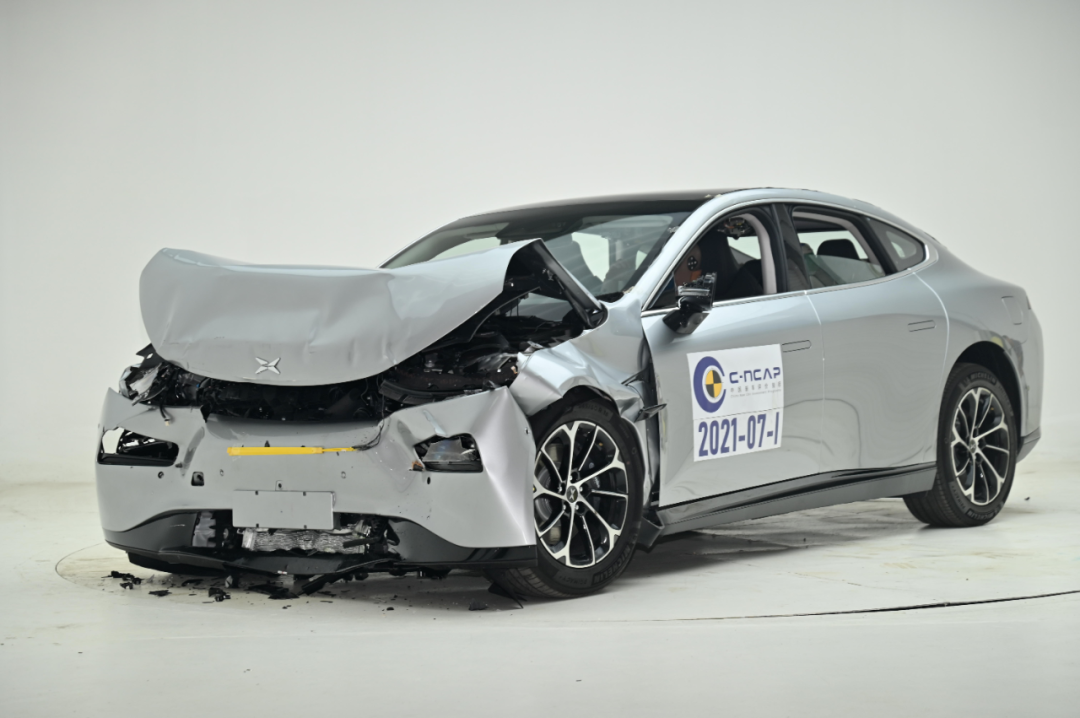
In the event of an intrusion, the steel and aluminum hybrid architecture of the P7 maximizes body rigidity. The front suspension arm is connected to the subframe front end, allowing the chassis to participate in the collision earlier, effectively increasing a collision transfer path.
Regarding the battery pack collision safety issue that concerns everyone most, the P7 uses precise tear control on the rear end of the subframe to ensure that the subframe does not move as a whole, effectively preventing intrusion into the battery pack while greatly reducing the peak deceleration value, thus protecting the battery pack.
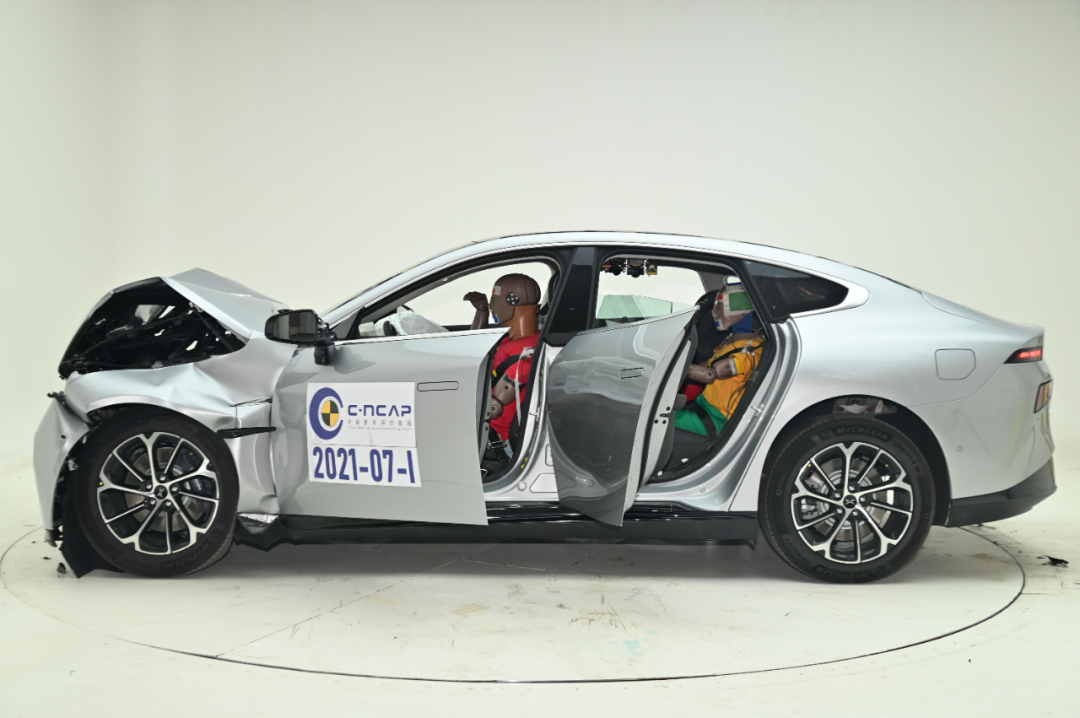
In terms of frontal collisions, another advantage of the P7 compared to traditional fuel-powered vehicles is that the electric driving system is rear-mounted. This means that the front compartment becomes a large crumple zone, and the entire energy absorption space reaches 1223 mm, which is 2.4 times that of a fuel-powered vehicle.
During the frontal collision, the peak deceleration value is reduced from 42 g to 25 g compared to a fuel-powered vehicle, a decrease of 41%. The collision process time is extended from 63 ms to 80 ms, an increase of 26%. As a result, it reduces the risk of chest and head injuries to passengers.
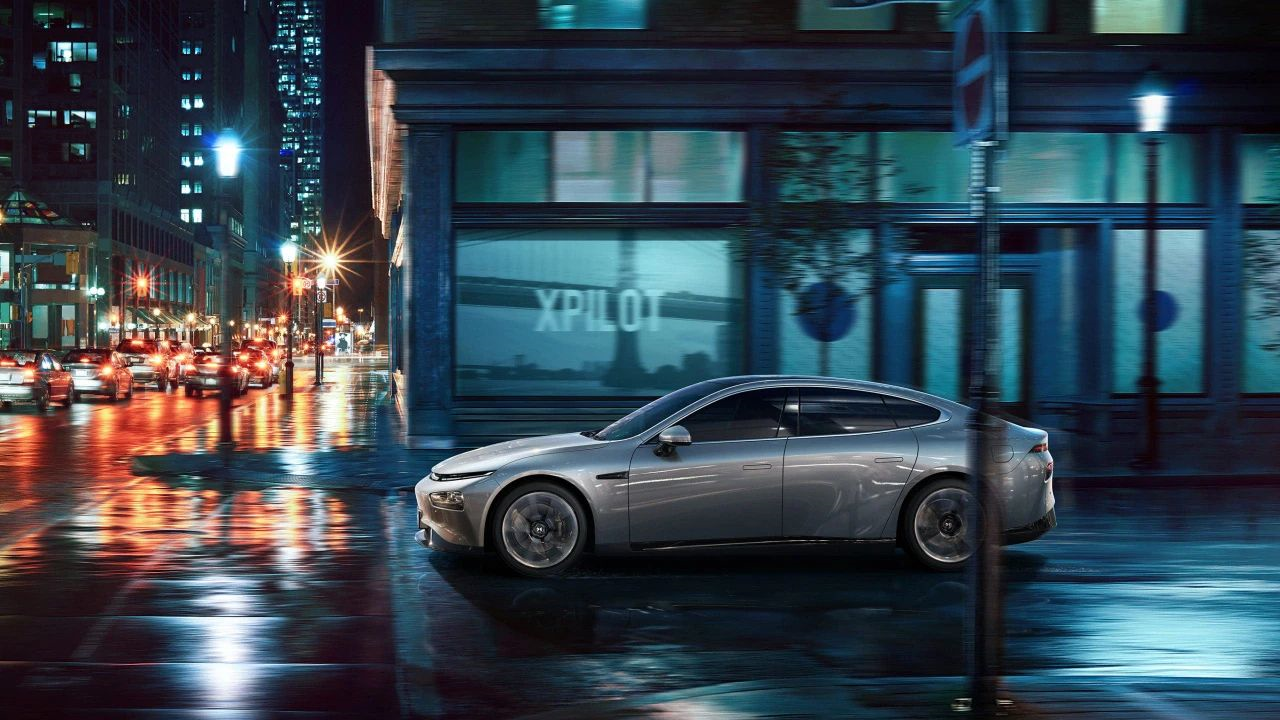
During actual driving, in addition to the assistance provided by the above-mentioned body materials, the P7 also helps the driver concentrate better through feedback such as pretension limit safety belts and ADAS system’s visual, auditory, and vibration sensations, thereby reducing the probability of collision accidents.
As a popular model of XPeng Motors in the past two years, the P7 has taken the lead in new car design and intelligence. We also had a comprehensive experience of it through the “P7 Sichuan-Tibet Tour”.
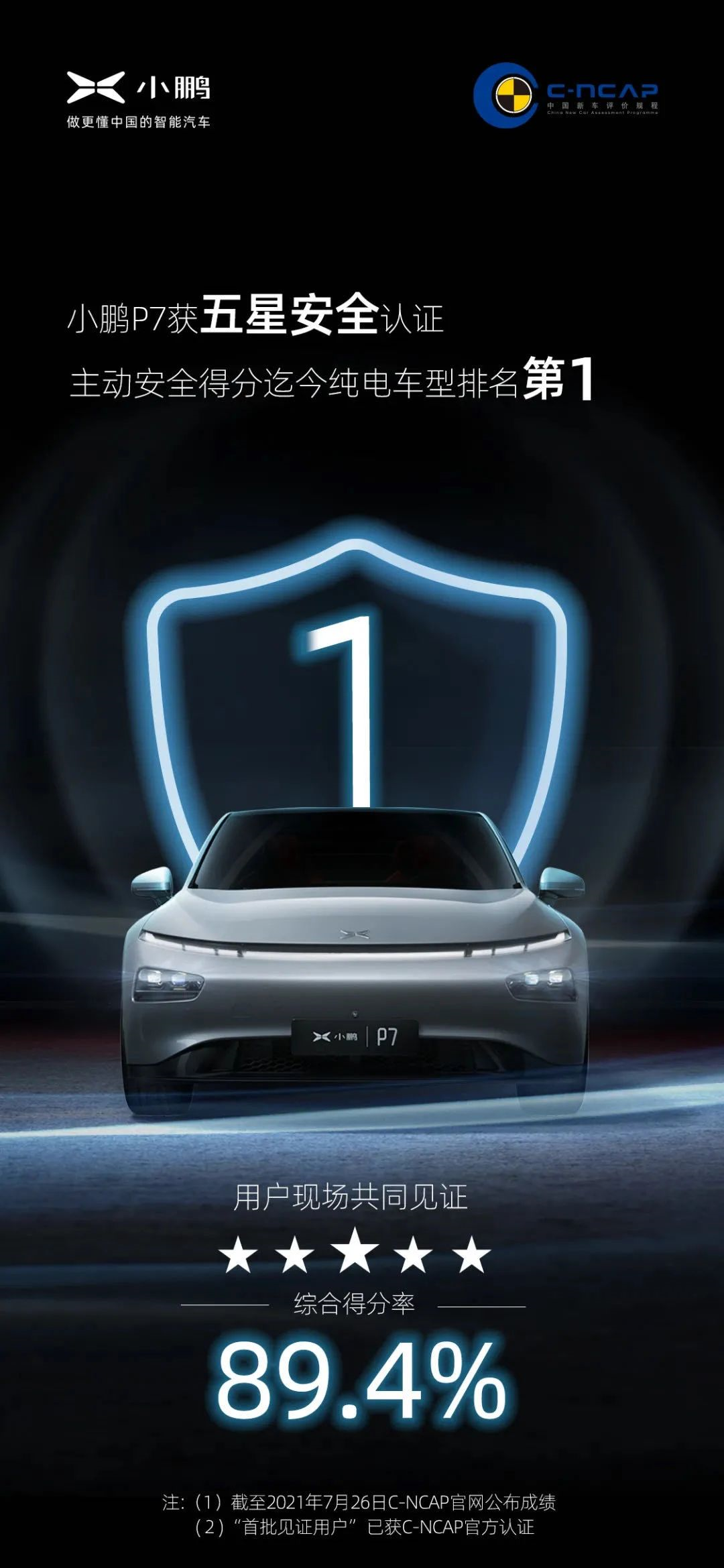
Although it is impossible to completely reproduce actual accident situations in use environments, the results of this collision test are an important reference based on objective data.
For the current P7, this report card is also timely.
This article is a translation by ChatGPT of a Chinese report from 42HOW. If you have any questions about it, please email bd@42how.com.
